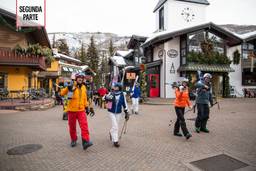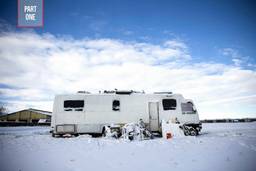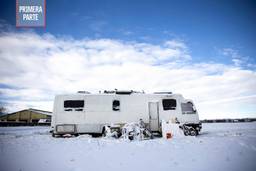The Vail-ification of the West
In part two of our series, we visit the Colorado ski towns at the extreme edge of rural gentrification.
Joseph Bullington
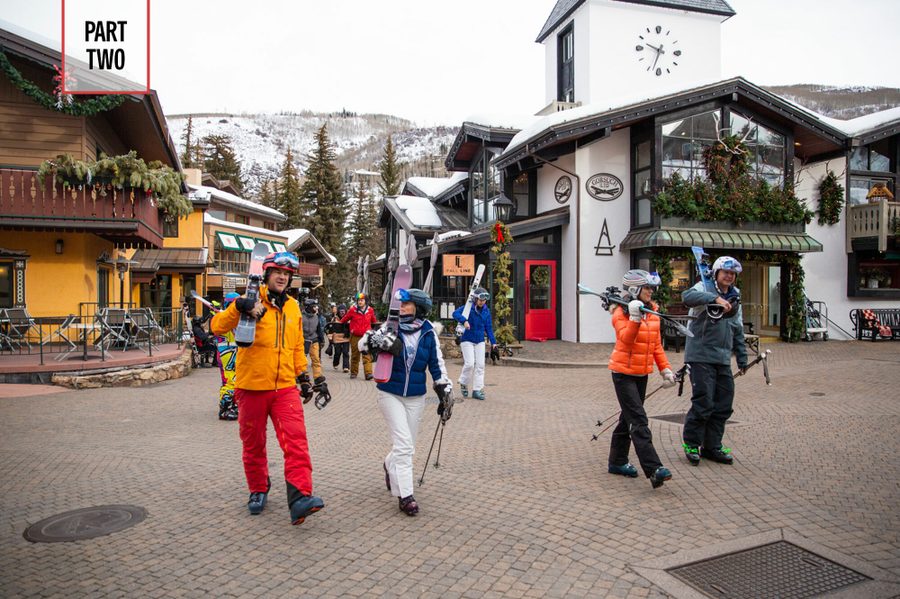
This is part two in a two-part series. Read part one here.
Lea este artículo en Español.
Welcome to Colorful Colorado,” reads the sign beside the highway as the road climbs from the alkaline flats of New Mexico into the foothills of the San Juan Mountains. But the landscape holds no color when Ana and her family cross the state line in the predawn dark.
When the family arrives in Durango at 6:30 a.m., Ana’s husband goes to his construction job installing heating and A/C ducts. Ana waits at her sister’s house until the bus comes to take their son to school. Then, Ana goes to work, too, cleaning houses.
This whole tiresome routine is new. Originally from Chihuahua, Mexico, the family lived for seven years in Durango, where they found work and a supportive immigrant community. But a recent influx of second-home buyers, wealthy retirees and highly paid remote workers rapidly drove up housing costs here, which pushed Ana and her family not just out of town but out of state — to a trailer park an hour south of Durango in Farmington, N.M., where rents are cheaper. (I’m not using Ana’s real name because she fears what might happen should the Durango School District discover they no longer live in the area.)
They are hardly the only ones making this daily commute. With their move to Farmington, Ana’s family joined a growing underclass in Durango and across the West: workers who build and clean the vacation rentals and luxury homes, who staff the restaurant kitchens and gear shops of the outdoors industry, but who cannot afford to live near where they work. In the mornings and evenings, the highways from these outlying towns roar with traffic as Durango draws workers up from the New Mexican scrublands and pushes them back out to recover from their labor in distant trailer parks. The volume of traffic has increased so sharply on this stretch of U.S. Highway 550 — up nearly 25 percent in the past decade, according to Colorado’s Department of Transportation — that the state is doubling the highway’s size from two lanes to four.
Where does this road ultimately lead? Over the past few years, I’ve been tracking the effects of gentrification across the West and have seen small towns — like Livingston, Mont., where I used to live — become nearly unrecognizable and fully unaffordable. Throughout my reporting, I’ve been wondering about the endpoint: What happens to these towns once working people are pushed out?
In the West, people commonly refer to one town being “behind” another — as in “Crested Butte is 20 years behind Telluride.” It’s a fatalistic and unscientific but depressingly accurate way of situating these places in the historical trajectory of Western mountain towns. That trajectory tends to run this way: Towns are founded and plundered by the mining industry, abandoned to decline into near-ghost towns, then (inevitably, it seems) discovered again for a new round of plundering and gentrification by the outdoors and real estate industries.
So to see where Durango and many other places might be headed — to see what a Western town looks like when the process of gentrification is complete — you don’t have to wait around for a decade. You only have to drive 300 miles north to Colorado’s famous resort towns — Vail, Breckenridge, Keystone, Aspen.
As I drove north, I thought of José Alberto Diaz-Cruz, who had lived in Durango for 12 years before rising rent and other living costs displaced him and his three daughters to a trailer park in Aztec, N.M. If this process continues, Diaz-Cruz speculated, towns like Durango will end up with no labor for their tourism.
That’s a common hope in these gentrifying towns — a story of redemption in which the rich profiteers, blinded by greed, sow the seeds of their own destruction.
It’s a good story. But as I soon learned in Vail, it just isn’t true.
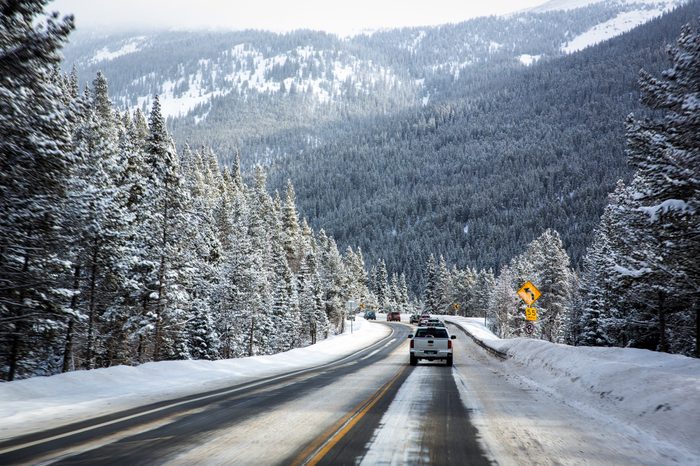
If you can spend $1,000 a night or more— perhaps much more during peak season — you might experience a resort town like Vail or Breckenridge as remarkably self-contained. You can stay at a “ski-in, ski-out” hotel — like Vail’s Arrabelle or One Ski Hill Place in Breckenridge — right at the base of the mountain. In the morning, after room service, you retrieve your skis from the ski valet, clip in and pole over to the high-speed chairlift for a ride to the top of the mountain. If the powder’s good, you can grab lunch from a snack shack and eat in the heated gondola on your way back up. If the snow isn’t great, maybe you ski into one of the high-end, slope-side restaurants to take in the views over a sit-down lunch. At the end of the day, after handing your skis to the valet, who will get them waxed and sharpened overnight, you might stop in for “après ski” cocktails and oysters. (This phrase, French for “after ski,” is everywhere in the Colorado resorts.)
If you’re visiting with family or friends and need more space, you can rent a whole house on Airbnb in a Breckenridge subdivision for about the same price. There’s no ski valet, but the lifts are only a 15-minute drive. In either case, a big part of what you’re paying for is proximity.
If you can’t pay such prices, however — if you’re staffing the Arrabelle or cleaning the Airbnb instead — you know these resort towns are anything but self-contained.
Katia and her husband Germán, like nearly everyone they know who works cleaning and construction jobs in ski country, are undocumented. Since they arrived in Colorado from Puebla, Mexico, more than 20 years ago, they haven’t gone skiing once, but they have become intimately familiar with a resort-town infrastructure primed to take advantage of people like them.
To get to one such Breckenridge Airbnb just after the 10 a.m. checkout time — essential if the four-bedroom house is to be ready for the next guests, arriving that afternoon— Katia and Germán fill the bed of their pickup with cleaning supplies and bags of clean sheets and leave their home in Leadville, Colo., no later than 9 a.m. In summer, Germán runs a house-painting business, but in winter, when construction work slows, he joins Katia to clean houses. On this day, snow flurries have left the road slick and they pass two cars in the ditch as they drive over a mountain pass and crawl down the other side in a long snake of traffic toward Silverthorne, Keystone and Breckenridge.
Like Katia and Germán, many — probably most — of the thousands of workers who run these resort towns can’t afford to live nearby. Instead, they commute from trailer parks and crowded apartments sprawled through the surrounding valleys, often an hour or more away and safely beyond the viewshed of the lodges and vacation homes. In Summit and Eagle counties, home to some of Colorado’s biggest ski resorts, the wave of gentrification currently underway in places like Durango and Bozeman, Mont., has been institutionalized into a business model. Vail, for example, houses less than 30 percent of its workers. Neighboring Pitkin County, home of Aspen, is the same: The county has nearly twice as many jobs as resident workers, meaning roughly half of its workforce commutes from “down valley,” outside county lines.
Gentrification, ski-country style, means 1,000-square-mile counties where workers can’t afford to live. If you follow the workers back up the highways, behind the veil of the mountains, you’re likely to end up in a distant trailer park full of Latino immigrants.
Katia explains it all more succinctly: “In the center is the rich people. Around the town is the communities for the Mexicans.”
Katia and Germán pull into the driveway of a house indistinguishable from the hundred others in this Breckenridge subdivision. It’s built in the ubiquitous, log-mansion style of New Western luxury with stained-wood beams that arch to a point over windows that frame snow-capped peaks and a hot tub on the back deck. But they have no time for the scenery. Katia runs up and down the stairs unloading supplies. She’s out of breath when she pauses to ask Germán a question. After changing the beds downstairs, she pulls on blue latex gloves to protect her hands from noxious cleaning chemicals and moves to the kitchen and dining room, where she scrubs the Keurig machines and granite counters and dusts a gold-crusted moose antler that decorates a bureau top. Germán cleans the master bedroom beneath sepia-toned wildlife photos before moving to the living room with its enormous stone fireplace.
For this roughly six-hour job, they will be paid $250 in total, around $20 an hour. Katia works for herself these days, which means she can set her own prices and schedule and share work with friends who need it. It also means the jobs can be inconsistent. But it’s better than the alternative.
Before Katia started her business, she worked for a cleaning company that hired her and other undocumented people to clean vacation rentals at $12.50 per hour, or $40 per two-bedroom apartment — wages that don’t go far in a place like Summit County. By hiring cleaners as “contractors,” the company avoided paying benefits like vacation time, sick leave or workers’ compensation — a strategy that lets companies reduce payrolls by 30 percent or more. When Katia and her coworkers asked for a raise, she says, the manager told them if they didn’t like it, they could leave. The implication was, because they’re undocumented, no one would pay them any better.
“They pay what they want,” Katia says. “They know you can’t leave the job, because you need the work.” As one indication of the hold these companies have, even as Katia was explaining to me one evening how badly a local cleaning business treats its workers, her neighbor José mentioned he was applying for a job with them now.
Companies big and small exploit undocumented labor here, says Katia, from the construction companies that build houses for the rich to the companies that clean for them and the restaurants that feed them. And some find creative ways to evade the legal issues. According to multiple sources, some companies hire undocumented workers for low wages and no benefits, and then contract them out to big companies like Vail Resorts, the roughly $9.5 billion corporation that runs not only Vail but Breckenridge, Keystone and Beaver Creek in Colorado, plus Park City in Utah, Whistler in Canada, three resorts around Lake Tahoe and 31 more around the world. For three years, Katia says she worked as a housekeeper at Breckenridge’s One Ski Hill Place, owned by Vail Resorts, but never was a Vail Resorts employee — since she officially worked for a temp service that contracted with the resort chain.
“The companies, they wash their hands,” Katia explains.
In response to a request for comment, Vail Resorts spokeswoman Lindsay Hogan said she wasn’t familiar with any situations like this.
Christian Luna-Leal, a member of the Leadville City Council and president of the regional housing authority, confirms that companies in ski country widely rely on undocumented workers, who are underpaid and lack benefits, for difficult manual labor. His parents, U.S. citizens now, started out as cleaners when they immigrated here from Mexico before he was born; he grew up in the Latino community that staffs the resorts.
“They strip a lot of resources from the community,” Luna-Leal says of the ski-industry companies. “And if people do stand up for themselves, it’s very scary, because of the threat of deportation.”
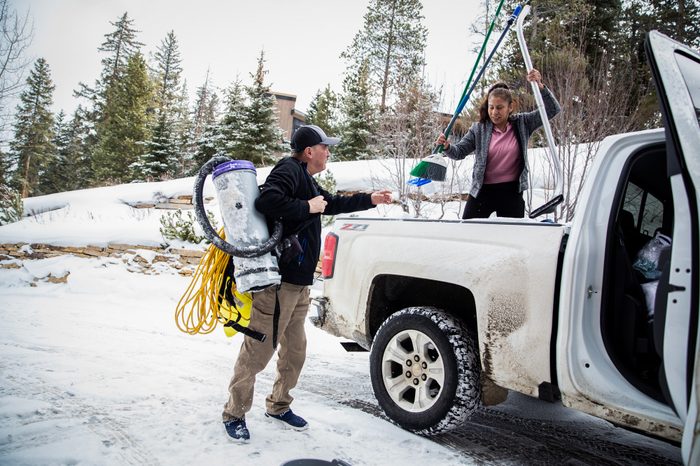
By almost any standard, Leadville, where Katia and Germán live, is an absurd place for a town. On a high plateau surrounded by higher peaks, at an altitude of 10,200 feet, Leadville claims the title of highest incorporated city in the United States — and you can feel it. I grew up at a mile high in Montana, but my four and five day stints in Leadville never felt long enough to catch my breath. Germán and his family moved up here ten years ago from Summit County and he still struggles with altitude sickness.
Leadville is here for one reason: The mega-lodes of silver and gold buried beneath it wouldn’t pull themselves out of the earth, and 19th-century mine workers needed places to live and spend their money when they weren’t underground. At the height of Colorado’s late 1870s silver boom, tens of thousands of people lived here, but the population crashed with silver prices in 1893.
These days, Leadville’s old working-class houses, shacks and trailer parks serve much the same purpose — a place to store the workers who staff the resorts where the wealth of the New West is mined. Leadville is the seat of Lake County and 70 percent of workers here commute to jobs outside of the county, mostly in the resorts. One important difference: Leadville’s housing isn’t particularly close to these new mines. Housing, real estate and proximity are the precious metals of the outdoors economy, and resort towns waste little of them on the working class. As a result, workers here make multi-hour daily commutes down some of the highest, steepest, snowiest highways in the country.
“I did it for years myself,” says Jackie Whelihan, who lives in Leadville and used to work at Vail Health. She doesn’t miss the commute, but her new job as Lake County’s housing director, which she started last year, isn’t any easier. “I did not have white hair when I started,” she says, laughing. “Just sayin’. I am aging like a president.”
Basically, the problem is this: Lake County has little choice but to bear the burden of housing workers for the neighboring resorts, but, as Whelihan puts it, “We’re not like our neighbors in Aspen and Summit and Eagle counties — we don’t have suitcases of money to throw at the problem.”
Alongside their housing problems, the resort counties also outsource other things to Lake County. The children of their workers go to school here, and 16 percent of those children live in poverty — a rate more than twice as high as in any of the neighboring resort counties. Neither the resort counties nor companies offer a safety net to many of their workers, and when Covid hit, many of them were immediately thrown out of work, says Stephanie Cole, executive director of the local nonprofit Full Circle Lake County. In response, Full Circle started a cash assistance program for undocumented workers not eligible for federal stimulus checks.
“Sixty percent of our applications for financial assistance are your employees,” Cole remembers telling local leaders in Eagle County, where Vail is located. “We’re constantly trying to get them to acknowledge the impact their employment model has on communities like ours.”
That model involves reaping tremendous profits while offloading the societal costs to places like Leadville. The model is also the logical endgame of the wave of displacement currently sweeping the newer boomtowns of the West, like Bozeman and Durango.
But even this system isn’t sturdy.
Leadville used to be the “naturally affordable housing” in the area, Whelihan says, but now that’s changing. In addition to Vail’s outsourced housing problems, Lake County has recently seen its own surge of remote workers, second-home buyers, short-term rentals and real estate investors. Landlords have raised lot rents in the trailer parks. Whelihan has a list of more than 170 people looking for a place to rent. Between February and March 2022, Whelihan watched as the median home price in town jumped from $500,000 to $750,000.
The stakes are particularly high in Leadville because it’s kind of the end of the line — there’s nowhere else in the area to be displaced to. So where do you go if you get priced out?
“Your car,” Whelihan says. “Your truck.”
Or: “You just leave.”
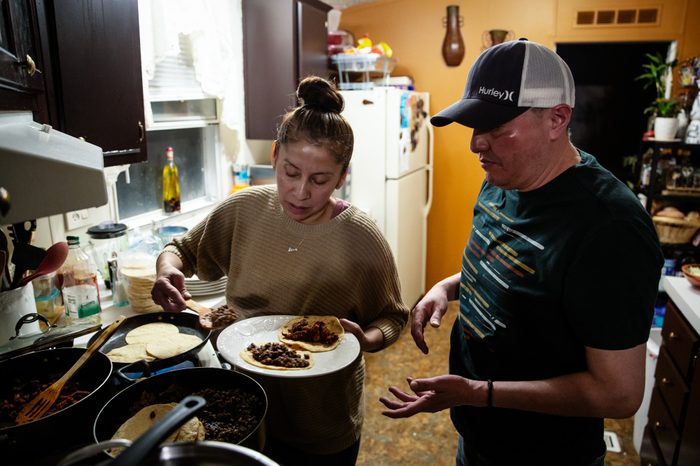
Federico, 24, catches the last bus from Leadville to Vail, which departs every morning in the dark of 6 a.m. It won’t return until after 5 p.m. Nearly empty as it leaves town, it stops at a trailer park a few miles down the road where it fills with immigrant women, ranging in age from their teens to their 60s and 70s. One older woman carts a medical oxygen tank that feeds her air through clear-plastic tubes. The odd, early-rising skier might catch a ride, but this is mainly a commuter bus to carry carless workers to housekeeping and restaurant jobs in the resorts. Loreta and Nancy, for example, are heading to Vail to clean vacation homes. María will transfer to another bus to Beaver Creek, where she works as a housekeeper in a lodge.
For Federico, this is the first leg of his daily journey, which ends two hours, two buses and a gondola ride later, at a bistro on Vail Mountain where he works as a prep cook.
None of these details were in the brochure, the seven-page PDF job description that Federico, at home in Paraguay, had studied for clues to what life would be like 5,000 miles north. “Leave everyday life behind you in Vail, Colorado and spend your winter surrounded by the grandeur of the Rocky Mountains,” the brochure reads. “At Vail Resorts, our mission is simple — to create the Experience of a Lifetime™ for our employees, so they can, in turn, provide exceptional experiences for our guests.” If the packet contains any note of foreboding, it’s a brief disclaimer under the heading “Housing Provided,” which reads: “Conditional. Housing is provided first come, first served.” But Federico planned to arrive early — surely among the first — and he’d worked the 2020 ski season at a resort in Minnesota where employee housing was provided, no problem. He figured it would work out.
Federico started the time-consuming and expensive process of applying for the required J-1 visa, a work and travel visa created in the 1960s to foster “global understanding through educational and cultural exchanges.” By September 2022, everything was set. Then, in November, just weeks before he was scheduled to travel, Vail Resorts finally contacted him: “Unfortunately, we will not be able to offer you [employee housing] and you will need to find your housing outside the company… . We ask that you please do NOT travel to the U.S. if you do not have housing.”
For Federico, this wasn’t an option. He’d already spent $2,500 to participate in the program, plus $900 on a plane ticket and $300 for the visa, an investment he needed U.S. wages to pay off. So he got on the plane.
Federico is one of thousands who travel to the United States every year under the J-1 visa program to work in Colorado’s ski resorts. That number is increasing: In the ZIP codes that contain Vail, Breckenridge, Beaver Creek and Keystone, the number of “work travel” J-1 visas issued has surged 33% just since 2018 — from 2,295 to 3,061. In number of visas, this area leads Colorado, which employs more work-travel visa holders than any state in the country.
For Federico, finding housing “outside the company” has proved a nightmare. With virtually nothing available on the long-term market, Federico and a crew of other J-1s, mostly from Paraguay, have taken to renting Airbnbs at high prices and moving around a lot, without a car. In December, they moved eight times. Faced with the need to move again in a few days, they’re considering another vacation rental that costs $8,000 a month — something they could only afford by packing nine people into the house, sharing rooms and rolling out sleeping bags on the floor. Federico estimates half of the J-1s in Vail are in the same situation — not housed by Vail Resorts and left to fend on the free market. If it weren’t for the generosity of the other J-1s, Federico says, he likely would’ve spent some nights sleeping in the Vail Transportation Center by now — he’s heard of people who have.
Vail Resorts spokeswoman Lindsay Hogan said that less than 10% of the company’s winter workforce are on J-1 visas but did not answer questions about how many J-1 workers the company employs, what percentage live in employee housing and how many are in situations like Federico’s.
“Not having secured season-long housing is in violation of the student’s program and visa requirements,” Hogan wrote. Despite Vail Resorts’ requirement that international J-1 workers secure their own season-long housing prior to arrival, some still arrive without it, she acknowledged, and claimed the company “work[s] to support [them] as best we can.”
But Federico doesn’t want Vail Resorts to know he doesn’t have season-long housing because he fears he’d lose his visa and be sent home, so he asked me not to use his real name.
Like Katia and Germán, Federico and his friends have found lots of people here ready to take advantage of their desperation. On New Year’s Eve, the group responded to an ad offering rooms for $600 a month. The person asked Federico and his friends to send $100 in advance to reserve each spot. They sent the money and the person stopped responding. Federico says he knew it was probably a scam, but he couldn’t miss out on the chance to rent a room.
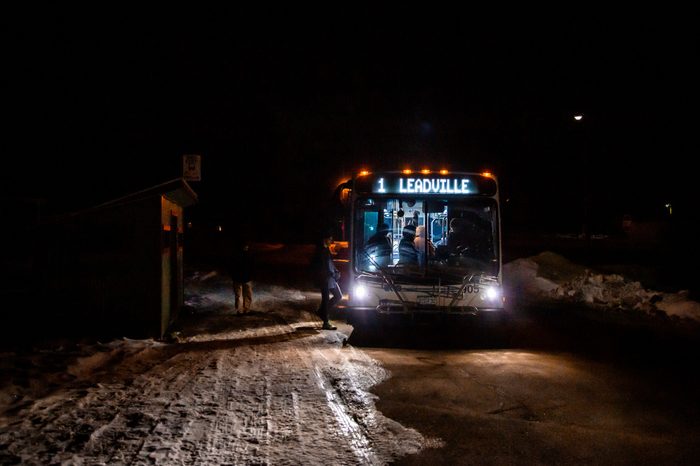
In a 2005 interview, while standing just north of the line that divides the Sonoran Desert into Mexico and Arizona, the famous border journalist Charles Bowden described what was happening out there in the dark. Every night, thousands of people walked north through the desert, risking their lives to get to the United States.
“What’s the solution?” asked radio journalist Scott Carrier.
“What’s the problem?” Bowden responded.
What he meant was this: For U.S. businesses, an immigration system that creates a steady flow of desperate, undocumented labor isn’t failing — it’s working quite well. The harder and more dangerous the United States makes it to cross the border, the more desperate the people who attempt it.
In the Colorado resorts, the so-called housing crisis— which has been going on for decades in some places — serves much the same function. The lack of housing for working-class families in resort towns creates long, treacherous, unpaid commutes that tend to filter out all but the most desperate. Not coincidentally, these are usually people vulnerable to being exploited in other ways.
Katia puts it this way, referring to the long drives to jobs with lousy wages and no benefits: “A person who has papers is not going to accept this.”
Navigating the snow-packed mountain roads between the resorts and the distant hamlets where workers can still afford to live, it’s hard not to be overwhelmed by the absurdity of it all, the arbitrary ways the whims of capital and profit have shaped this landscape.
This system takes its toll not just on places like Leadville, but on the resort towns themselves.
Besides their gaudy displays of wealth, these towns stand out mostly for their overwhelming lifelessness. Vail feels less like a town than the set of a movie that can’t decide whether it takes place in the Old West or the Bavarian Alps. You get the sense that, with a solid kick, you could put your foot through it. One day, stuck in Vail while waiting for the evening commuter bus back to Leadville, I read a book celebrating the resort’s history — the founders who, in the 1960s, had the vision to look at an empty mountain and build somewhere out of nowhere. Wandering around their creation 60 years later, however, I was struck by the success of their actual achievement: building nowhere out of somewhere.
Another time, outside the Breckenridge Airbnb while Katia and Germán cleaned, I was amazed by how quiet it was — a neighborhood without neighbors, utterly empty past checkout time on the Monday of a long weekend, the silence interrupted only by the odd phrase of Spanish carried downwind from a construction crew building a house a few blocks over and the occasional thunder of avalanche cannons blasting last night’s snow out of the steep chutes on the ski hill.
But things are not fully dictated by economic forces. Katia and Germán live in Leadville not only because it’s cheaper but because it’s more peaceful, a nicer community to raise their son, Gael, a sophomore in high school. With the money they save on rent, they’ve helped put their oldest son through college in Denver. Their friend José lives next door not only because it’s relatively affordable but because, as Katia says, he’s like family — he and his wife had lived in the trailer with Katia and Germán until they could get a place of their own. A young friend of José’s crossed the border and arrived here a few weeks ago because José can help him find work and housing. Federico and the other J-1s squeeze houseless coworkers into already crowded Airbnbs.
Again and again, from Livingston, Mont., to the Colorado resorts, it is these impromptu, unofficial networks of friendship, love and mutual aid that help people survive these hostile places, find housing and tap into the veins of money that are the only means of surviving this ruthless economy.
Standing there in that empty subdivision, I thought of Katia and Germán’s trailer home in Leadville where, at the end of a workday, Germán cooks carne asada and al pastor tacos and Katia sets out dishes of onion, limes and fresh cilantro. José and his wife bring over ceviche, made in the style of their coastal Chiapas hometown. José’s young friend tells stories of his recent border crossing and Gael watches the soccer game and the woodstove cranks out heat against the enveloping cold.
Breckenridge, Vail, Aspen — these are the ghost towns of the New West, and I couldn’t wait to escape, back to Leadville, where — for now, at least — people still actually live.
This story was supported by the Leonard C. Goodman Institute for Investigative Reporting.
This is part two in a two-part series. Read part one here.
Joseph Bullington grew up in the Smith River watershed near White Sulphur Springs, Montana. He is the editor of Rural America In These Times.




